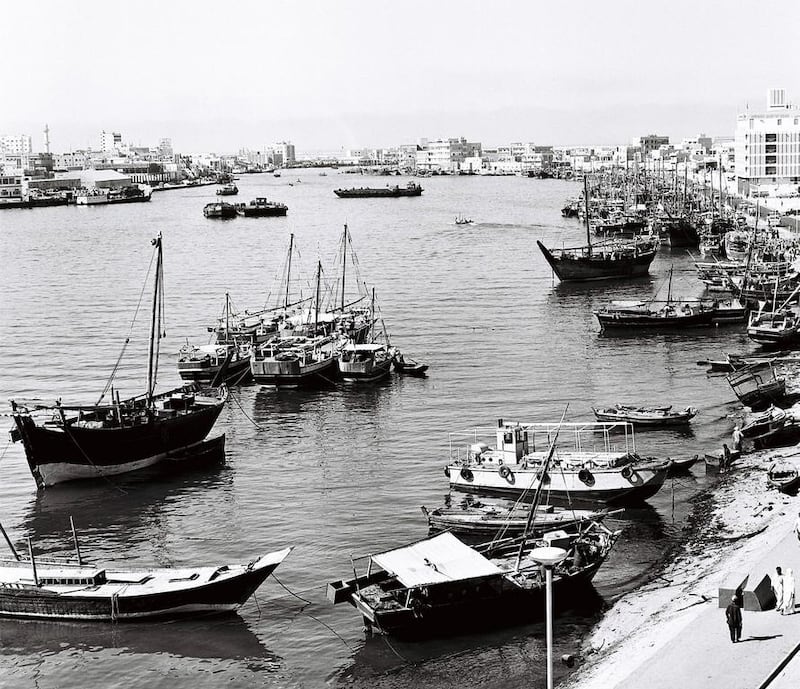For centuries, the Creek was the link between Dubai and the outside world. As the city changes so rapidly that it can be difficult to keep up, the port plays an important role in bridging past and present. Yet, remarkably, it still makes its living as a key part of Dubai's import-export trade.
DUBAI // Before the discovery of oil, the influx of tourists, mega-malls and skyscrapers, Dubai was an important port for fishermen, pearl traders and merchants from the region and beyond.
To this day, the best way to see the city is from the sea – sailing down the coast and into the heart and soul of the emirate, Dubai Creek.
“As we say, the Creek for Dubai is like the Nile for Cairo, like the Thames for London,” said Eng Rashad Bukhash, director of the architectural heritage department of Dubai Municipality.
The tranquil waters of the Creek offered a safe haven for vessels at a time when fishing and pearl-diving were the pillars of the economy.
The earliest mention of a city with the name Dubai can be found in a book by Gasparo Balbi, a Venetian pearl trader, from 1587. A British map from 1820 shows a walled city with about 1,000 residents at the location of what is today the bustling Bur Dubai neighbourhood.
The ancestors of the Al Maktoum royal family settled in Dubai in 1833.
Dubai’s prominence as a Gulf trading hub followed the decline of the city of Lengeh, or Linja, in present-day Iran.
That city, said Mr Bukhash, had been under the control of the Al Qassimi family from Sharjah and Ras Al Khaimah until the Iranian government took over in 1897.
_________________________
More from our coast series
Dalma Island | Jebel Ali | Ghantoot | Marawah Marine Biosphere
_________________________
This prompted the ruler of Dubai to invite Linja’s merchants to relocate to Dubai in 1902 and 1903. Many did, which helped Dubai become a key trading port in the Gulf.
The fortunes of the city changed again in the 1930s when industrial pearl making in Japan shattered the local pearl trading economy, forcing many people to migrate to countries such as Kuwait and Saudi Arabia.
In 1958, when Sheikh Rashid bin Saeed Al Maktoum – father of Sheikh Mohammed bin Rashid Al Maktoum, the emirate’s current Ruler – took power his first task was to take a loan from Kuwait to commission the dredging of the Creek to a depth of about nine metres, making it accessible for large vessels.
“That impacted the economy as Dubai again became an important port in the area,” said Mr Bukhash.
“Very soon after that Rashid Port was built, then Jebel Ali Port was built.”
Before the deepening of the Creek, the amount of sand deposited at the mouth of the Creek by northern winds would mean that vessels visiting the harbour would often need a local pilot to guide them past the sandbanks to avoid becoming grounded.
Dubai Municipality dredges the waterway about every five years to ensure it continues to provide a clear passageway for seagoing visitors and traders.
Last year, the Creek was visited by 24,000 dhows and the markets on each side of it generated an estimated Dh30 billion in trade, said Mr Bukhash.
Trading is to be enhanced by the work on the Dubai Canal Project, which will expand the Creek by providing another connection to the Arabian Gulf.
“The Dubai water canal project will not only change the area but will improve the water quality of the entire Dubai Creek,” Maitha bin Udai, chief executive of the Traffic and Roads Agency at the RTA, said last year.
vtodorova@thenational.ae






